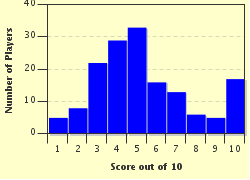Quiz Answer Key and Fun Facts
1. Man's Best Friend:
Believed to be the most decorated war dog of World War I, which canine served on the front line with the US 102nd Infantry Regiment?
2. Little Helpers:
Zoologist and naturalist Doctor Paul Bartsch worked alongside the US Bureau of Mines during World War 1. Which creature did he recommend could save thousands of lives inside the front line trenches?
3. Winged Heroes:
Around 250,000 pigeons were used as carriers of secret communications during World War II. What is so special about Gustav, otherwise known as NPS.42.31066?
4. Feline Friends:
The British Royal Navy ship HMS Amethyst was trapped on the Yangtze River for three months in 1949 during the Chinese Civil War. Who was the cat responsible for catching vermin during the ship's incarceration?
5. Vermin Control:
"We train rats to save lives" is the motto of which humanitarian organization formed in 1997 to detect landmines in war-torn countries?
6. Experimental Weapons:
Which country devised the bat bomb, an experimental bomb which housed thousands of hibernating bats during World War 2?
7. Horse Power:
War poet Henry Chappell (1874-1937) wrote which of these poems to honour the death of a fallen war horse?
"Only a dying horse! he swiftly kneels,
Lifts the limp head and hears the shivering sigh
Kisses his friend, while down his cheek there steals
Sweet pity's tear, "Goodbye old man, Goodbye"."
8. Underwater Army:
The United States NMMP started training military dolphins and sea lions in the 1960s. What do the initials NMMP stand for?
9. Military Mascots:
The Royal Warwickshire Fusiliers is a British infantry regiment that has been using which animal as their mascot since 1707?
10. Just Rewards:
Considered to be the animal equivalent to the Victoria Cross, which bronze medallion has been awarded for gallantry and devotion since 1943?
Source: Author
Plodd
This quiz was reviewed by FunTrivia editor
bloomsby before going online.
Any errors found in FunTrivia content are routinely corrected through our feedback system.

